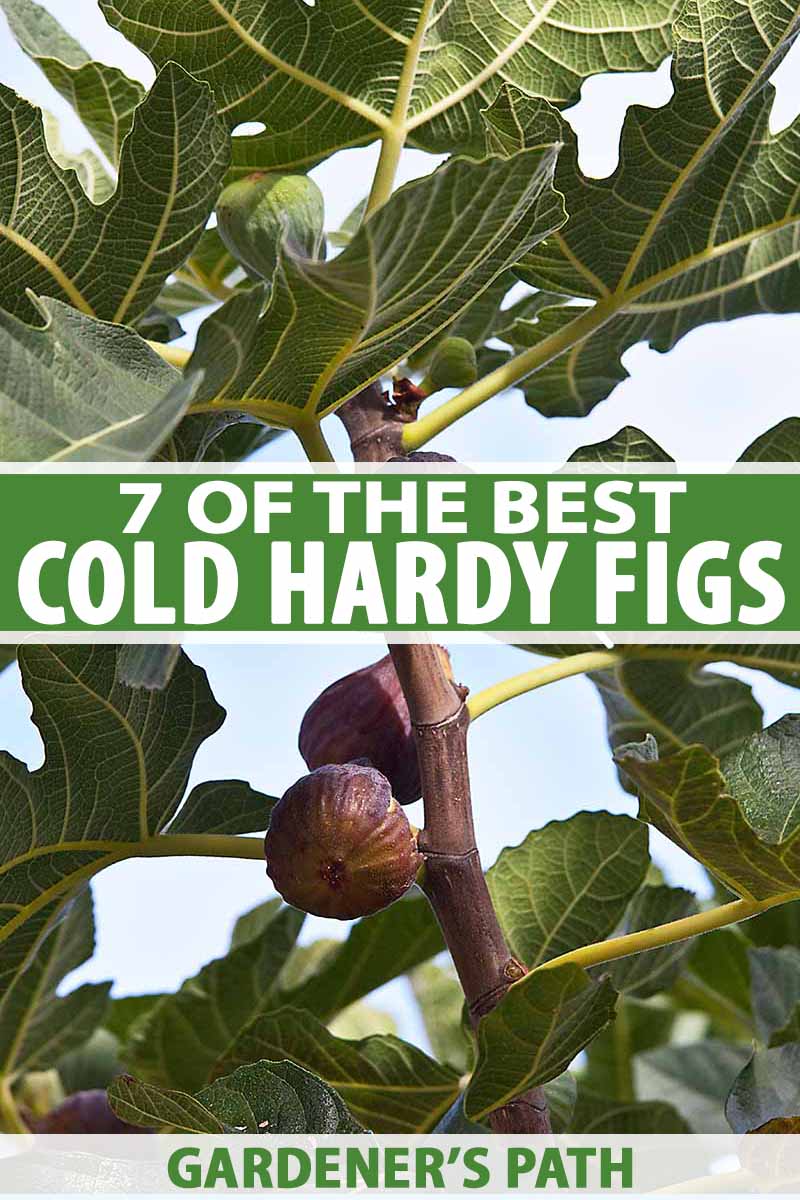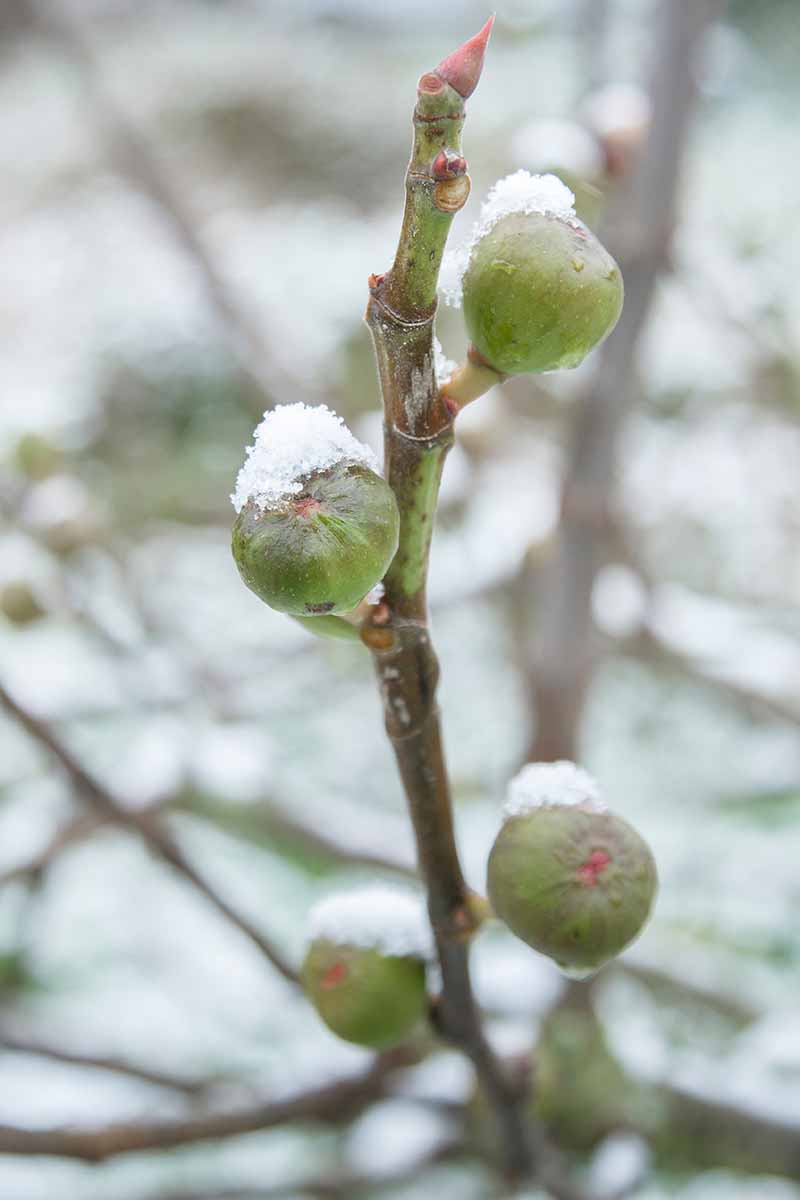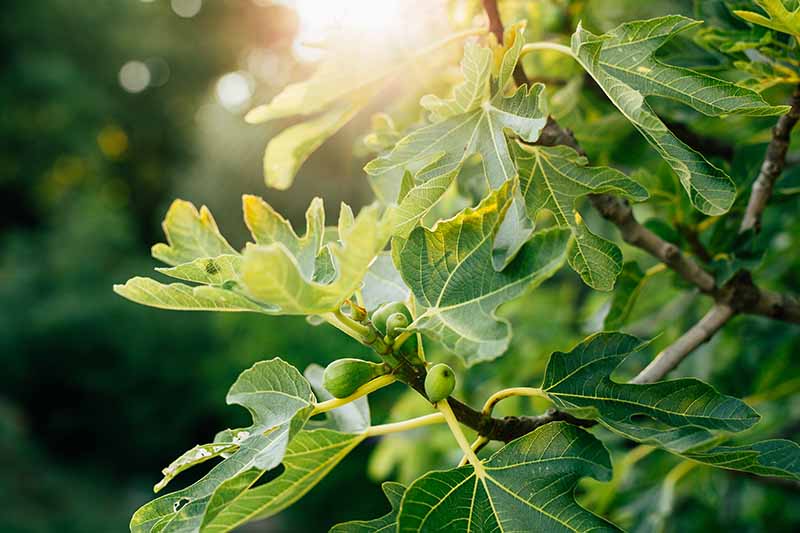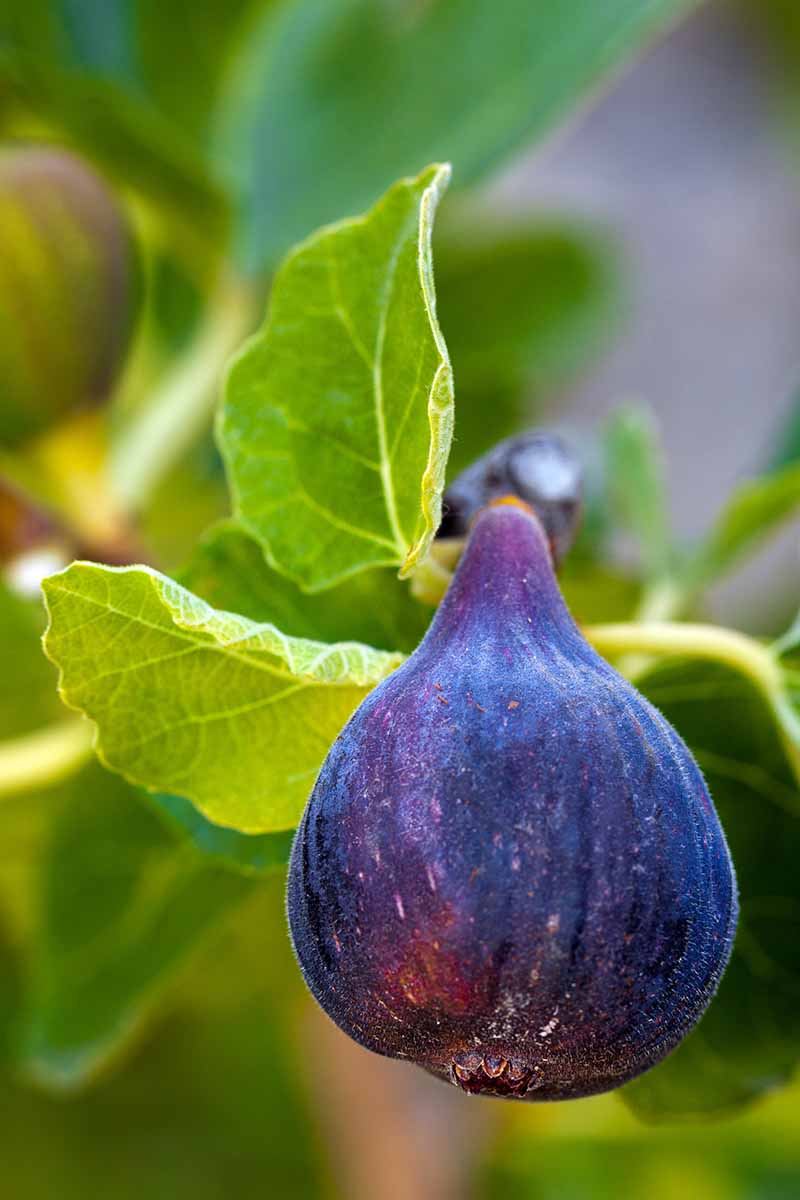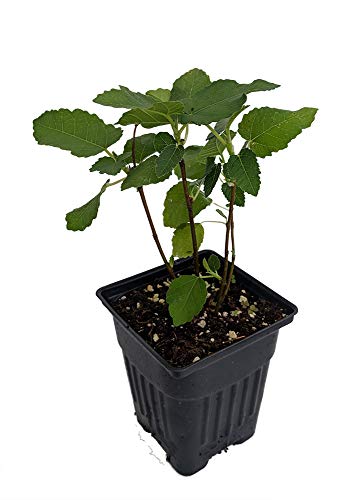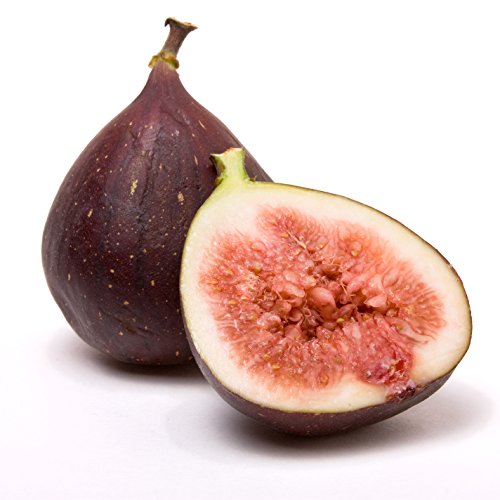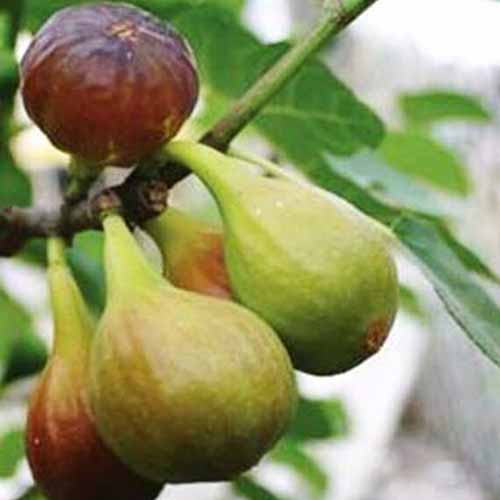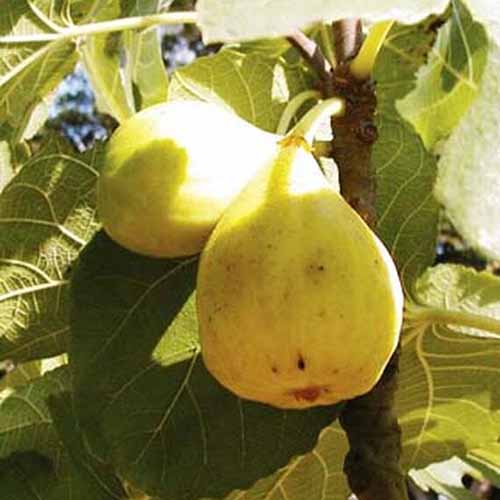We link to vendors to help you find relevant products. If you buy from one of our links, we may earn a commission. But first, let’s get some idea of how to maximize success when growing figs in chilly weather.
Most fig trees will thrive unprotected in USDA Hardiness Zones 8-10. The cold-hardy varieties can withstand winters in Zones 6 and 7, but they will require some protection.
Tips for Growing Figs in Cold Weather
After you choose the cold-hardy variety you would like to plant, the next important factor is site selection. Even a type well-suited for your climate needs a head start by being planted in a protected location.
Your best bet is to site your tree in a sunny area protected from wind – next to a south-facing wall, for example. If you suspect you might have to cover or wrap your tree to keep it safe through the winter, consider keeping your tree pruned into a bush form. Burlap and tar paper are good materials to use if you need to wrap your tree. You can also construct a “cage” of chicken wire around the tree, and then fill the cage with mulching material such as hay, straw, or shredded leaves. You’ll also want to lay down a thick carpet of mulch round the base of the tree to protect its roots. We cover these techniques in more detail in our guide to wrapping fig trees (coming soon!).
Alternatively, you might purchase a dwarf-type fig, plant it in a large container with casters, and overwinter it in a protected area such as a garage. One consideration to keep in mind is that, regardless of hardiness rating, the timing of a cold spell can impact a fig tree’s ability to withstand the chill unscathed.
Cold-Tolerant Varieties to Choose
Check out this list of cold-hardy fig varieties that could soon be enlivening your landscape and tickling your palate.
1. Brown Turkey
These big beauties can grow to 20 feet tall, but can also be pruned to a more manageable size – around 8 feet tall is most desirable. Some people even prune ‘Brown Turkey’ trees into bonsai plants! ‘Brown Turkey’ ‘Brown Turkey’ does well in Zones 7-9, but with extra attention will overwinter in Zone 6, as well. This tree has shallow, somewhat invasive roots, so keep that in mind when selecting a site. You can also order live plants from Home Depot.
2. Brunswick
Also known as ‘Magnolia,’ the ‘Brunswick’ variety grows to about 10 feet tall by 12 feet wide. This tree produces medium-to-large purple fruit, and the pink to amber flesh is especially well-suited for preserving. ‘Brunswick’ ‘Brunswick’ does well in USDA Zones 7, 8, and 9. It is hardy to 5°F.
3. Celeste
‘Celeste’ produces small, brown-purple figs that are rich and sweet – so sweet that another nickname for this variety is “sugar fig.” The attractive tree can get quite large at 15 feet tall and wide. ‘Celeste’ ‘Celeste’ is cold-resistant to 0°F – like what you will find in Zones 5 and 6 – and does especially well in Zones 7-9. Keep in mind that you will have to offer the tree protection, as described above, in the colder zones. This low-maintenance tree is self-fertile, meaning you need only one tree to get fruit. It’s not picky about soil, as long as it is well-draining.
4. Hardy Chicago
This variety produces sweet, light purple-brown figs that ripen in late summer. The tree grows 10-15 feet tall, with a spread of 9-12 feet. See our guide to growing ‘Hardy Chicago’ fig trees here.
‘Hardy Chicago’ Among the hardiest of fig trees, this one will withstand Zone 6 winters, and maybe even Zone 5, if planted in a sheltered location. Its stems are hardy to 10°F and its roots can withstand temperatures down to -20°F. Stems that die back will likely resprout in spring and produce fruit on the new wood. This cultivar is also known as ‘Bensonhurst Purple.’ This variety is available at Burpee.
5. Petite Negra (Negri)
With a mature size of three to four feet tall and wide, the highly prunable ‘Petite Negra’ is particularly well-suited for container growing. It’s hardy to Zone 7, but if you grow it in a container, simply move it to a sheltered spot or indoors to overwinter. This plant is self-pollinating. Its medium-to-large, deep purple-black fruit has a thin skin and is quite tasty, and you’ll likely get two crops a year.
6. Violette de Bordeaux
Also known as ‘Negronne,’ this variety is on the smaller side, growing to six to 10 feet tall and spreading four to five feet wide.
‘Violette de Bordeaux’ The blackish-purple fruit with purple-red pulp is known for its lovely fragrance and rich, sweet flavor. This one does well in Zones 5-9, though it will need winter protection in Zones 5 and 6. Small rooted cuttings of ‘Violette de Bordeaux’ are available at Burpee.
7. White Marseilles
This fig was apparently a favorite in Thomas Jefferson’s gardens; he is said to have discovered it in France and introduced it to the United States.
‘White Marseilles’ This variety is particularly well-suited to northern climates, and is considered appropriate for Zones 6-9. Its fruits are greenish-yellow and have sweet yellow flesh. It grows to a height and width of 10-12 feet. Live plants of this variety are available at Burpee.
Plenty of Fig Options for Colder Areas
If you’re looking to grow this Mediterranean favorite in a chilly part of the country, as you can see, you have choices.
You may have to take a little more care than those of us in the south do, but with the proper varietal selection and a bit of TLC come fall, your tree should do just fine. Do you grow figs in the North? In the comments area below, tell us your favorite type and any tips you have for fellow cool-weather gardeners. Looking for other fruit trees for your orchard? Check out these articles:
Give the Gift of Fruit: How to Grow Peach Trees 9 of the Best Cold Hardy Avocado Trees How to Grow and Care for Fruiting Cherry Trees
© Ask the Experts, LLC. ALL RIGHTS RESERVED. See our TOS for more details. Originally published on December 30, 2019. [lastupdated]. Product photos via Andryani, Burpee, Hirt’s: Edible Figs, Grower’s Solution, and Wellspring Gardens. Uncredited photos: Shutterstock.

